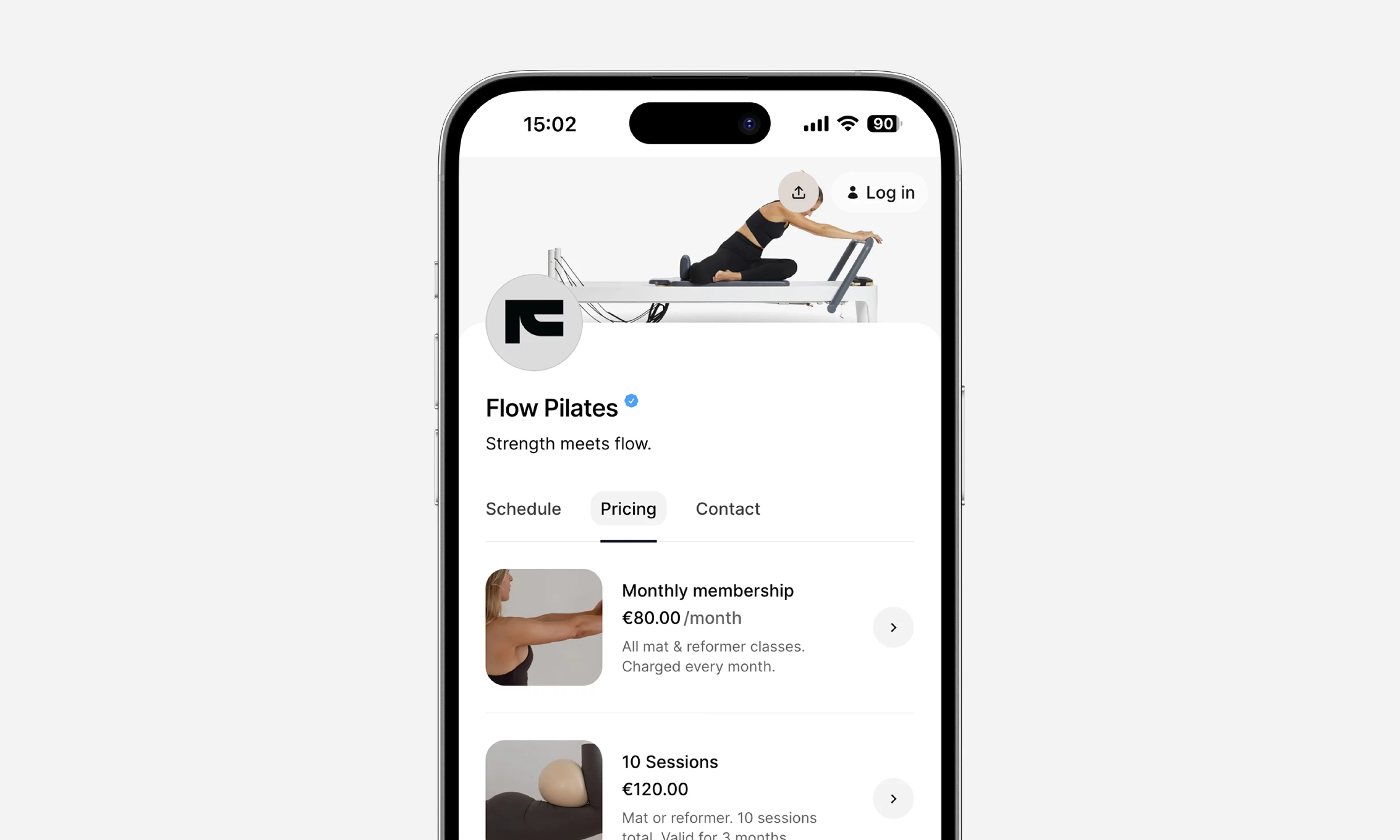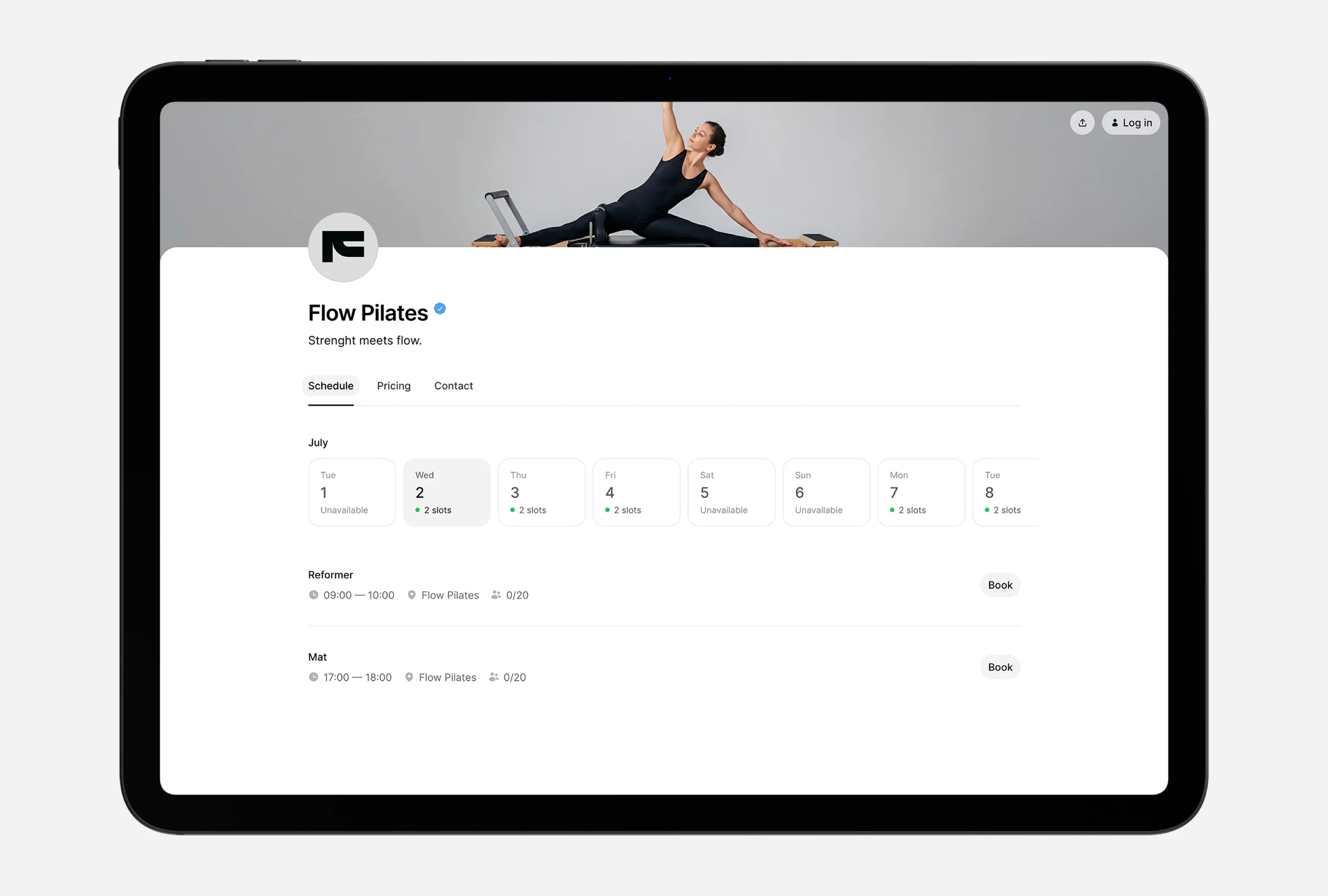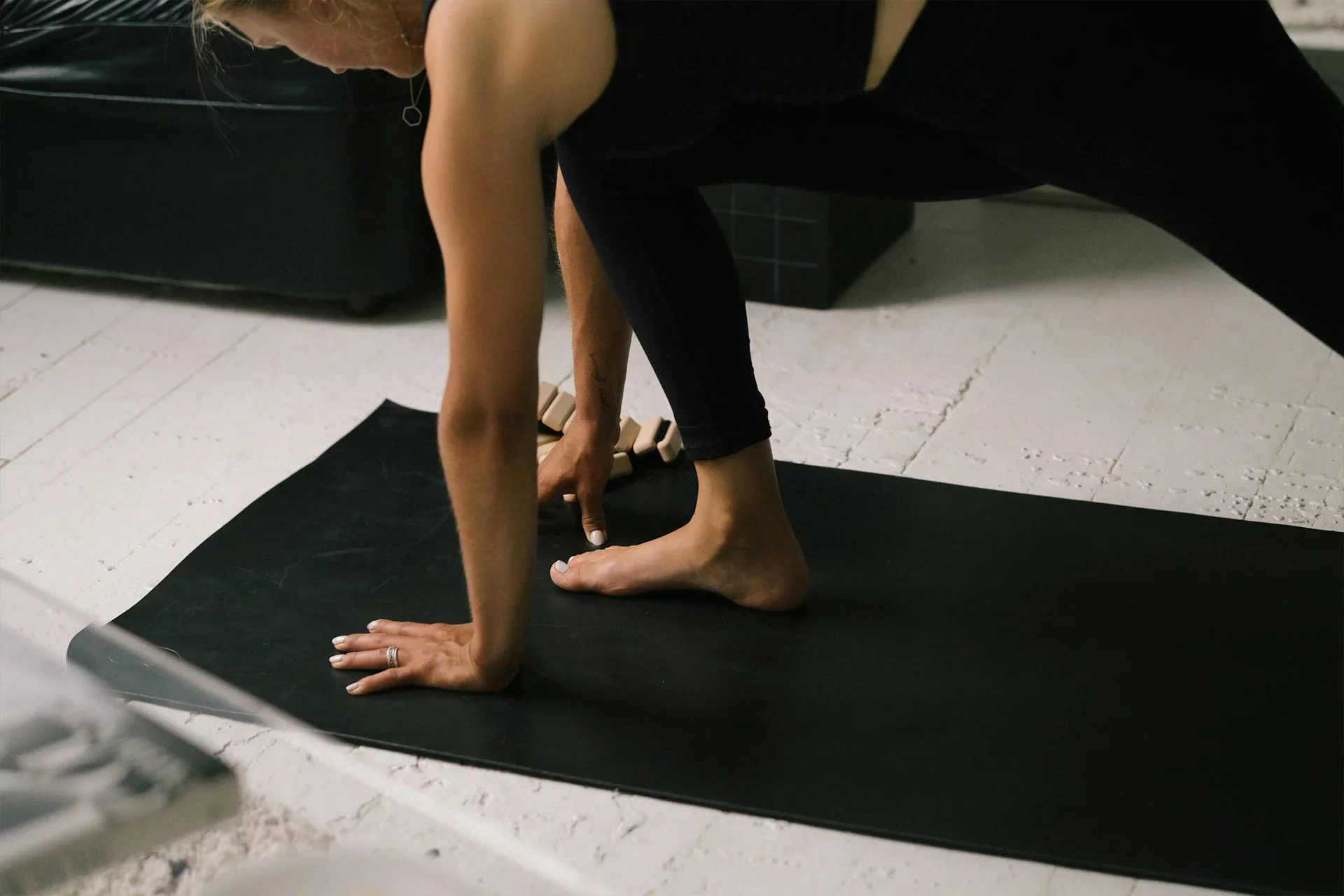Opening your own Pilates studio is an exciting journey—one that blends passion, precision, and people. To help you hit the ground running, we’ve fleshed out each tip with real-world advice, pro strategies, and micro-steps you can implement today. Let’s make your studio launch smooth, simple, and successful.
1. Pick the Perfect Space
Your studio’s physical environment sets the stage for every class—and every client impression.
Assess your market: Scout neighborhoods with active fitness communities or wellness hubs. Visit at different times of day to gauge foot traffic.
Layout for flow: Map out zones for reformers, mat work, props storage, reception, and retail. Leave minimum 6 ft between reformers for movement and safety.
Light, air, and vibe: Prioritize natural light—windows, skylights, or glass storefronts. If natural light is scarce, invest in full-spectrum bulbs for an energizing glow. Add live plants or minimalist décor to create a calm, inviting atmosphere.
Accessibility: Ensure ADA compliance, ground-floor access, clear signage, and parking or bike racks. Pro tip: a visible “Pilates” decal on your door helps passersby instantly know what you offer.
2. Invest in Quality Equipment
Your gear is the backbone of every session. High-quality apparatus ensures safety, longevity, and premium feel.
Reformers: Aim for at least 4–6 mid- to high-end reformers (all-wood or commercial metal). Consider gently used machines from reputable studios upgrading their fleet.
Cadillacs & Chairs: Diversify your class offerings—add 1–2 Cadillacs and Wunda Chairs to support rehab, flexibility, and advanced moves.
Mats & Props: Stock high-density, non-slip mats. Keep Pilates rings, resistance bands (light–medium–heavy), foam rollers, small balls, and magic circles on hand. Display props neatly for self-service and quick instructor access.
Maintenance plan: Set up quarterly equipment inspections and have replacement parts on speed dial. This proactive approach minimizes downtime and costly repairs.
3. Define Your Signature Class Formats
Stand out by curating experiences that meet specific member goals—and keep them coming back.
Foundations Flow: A 45-minute intro focused on core engagement, posture alignment, and breathing. Ideal for complete beginners or return-to-mat clients.
Pilates Power: A dynamic, 60-minute workout blending reformer intervals with mat bursts for cardio, strength, and sweat. Perfect for fitness enthusiasts.
Restore & Rehab: Small-group, 30-minute sessions using gentle reformer adjustments, props, and therapeutic stretches. Marketed to post-injury or mobility-focused members.
Fusion & Events: Monthly collabs like “Pilates + Barre Burn” or “Pilates & Yoga Stretch.” These limited-edition classes create buzz and cross-sell between fitness disciplines.
Pro tip: Give each class a unique, branded name (e.g., “Core Catalyst” or “Reformer Reset”) and a bullet-pointed benefits list on your schedule page.
4. Nail Your Pricing Strategy
Your pricing should feel transparent, flexible, and irresistible.
Tiered membership: Offer Unlimited Monthly (€120–€150/month), 10-Class Pack (€200–€220; valid 3 months), and Drop-In (€25–€30). Clearly list per-class cost savings.
Intro deals: Two weeks unlimited for €49—or “Pilot Pass” with five 45-minute classes. Use this to build your initial roster.
Add-Ons & Upgrades: Private sessions (€60/45 min), small-group workshops (€35), equipment rentals for home practice (€5/class).
Transparent billing: Show billing dates, cancellation policy, and upgrade options. A clean, tabular layout (with checkmarks) reduces sticker shock and support emails.

5. Build an Inviting Brand & Community
A strong brand and tight-knit community turn one-time visitors into loyal members.
Visual identity: Develop a minimalist logo, choose 2–3 brand colors, and a friendly sans-serif font. Roll these out consistently across your website, social profiles, and studio signage.
Founders’ story: Share a heartfelt “Our Why” page—why you fell for Pilates, what drives you to teach, and how you envision your studio’s future. Authenticity fosters connection.
Member spotlights: Monthly blog or social posts profiling transformation stories. Include before/after photos (with permission) and direct quotes.
Events & challenges: Host quarterly “30-Day Core Challenge” or “Posture Reset Week,” complete with a leaderboard, daily prompts, and small prizes like branded water bottles.
6. Choose a Seamless Booking Tool
Streamlining admin means more time on the mat and less in your inbox.
Core features: Look for online booking widget, secure card + SEPA payments, class reminders (email/SMS), and automated waitlists.
Integrations: Sync with Google Calendar, MailChimp (or similar), your CRM, and Zoom (for live-streamed classes).
User experience: Test the flow on mobile devices—clients should book a class in under 60 seconds, with saved card details and one-click confirmations.
Analytics dashboard: Real-time views of sales, no-show rates, and capacity utilization. Use these insights to tweak class schedules and promotions.
Example: Flow Pilates on Time2Book
Here’s how a polished Pilates profile looks on our platform:

7. Hire & Train Your Dream Team
Your instructors are the heartbeat of your studio—invest in talent and culture.
Certification standards: Require PMA, Stott, Balanced Body, or BASI certifications. Verify teaching hours and client testimonials.
Cultural fit: During interviews, ask about their teaching philosophy, community engagement ideas, and conflict-resolution style. Role-play a mini feedback session to see how they handle critique.
Onboarding & growth: Run a 2-day bootcamp covering your tech stack (booking tool, CRM), brand voice, customer service protocols, and hands-on studio walkthrough. Schedule monthly “Technique & Retention” workshops to share best practices and fresh cues.
8. Create a Pre-Launch Buzz
Build anticipation and start generating revenue before your doors even open.
Set up your Time2Book profile: Create your studio page in minutes and list your upcoming mat and reformer classes—even before you launch. Add studio info, a banner image, and schedule teaser classes.
Pre-sell memberships: Offer early-bird deals like “Founders’ Membership – €65/month for life” or “First 10 clients get a free 1:1 intro session.” Enable online payments and collect signups directly through your profile.
Share the link everywhere: Add your booking link to your Instagram bio, post it in local Facebook groups, and include it in your email list.
Build trust early: Include testimonials from test-class participants or loyal private clients—even 1–2 quotes can boost credibility.
Create urgency: Use your Time2Book description to mention “Limited spots” or “Only 10 founder memberships available.
9. Host an Unforgettable Opening Week
Turn first-time visitors into long-term members with a high-energy launch.
Free mini-classes: Four classes per day (30 minutes each) for seven days. Limit to 10 spots/class and require a small refundable deposit to reduce no-shows.
Referral contests: “Bring a friend this week and both of you get 50% off your next month’s membership.” Track referrals via unique codes.
Goodie bags & swag: Branded tote, water bottle, trial-class voucher, and discount coupon for your retail shelf (e.g., Pilates socks, grip gloves).
Media outreach: Send local bloggers and news outlets a press release with photos and an invite to cover your opening-week classes.
10. Track Key Metrics & Adapt
Data isn’t just for big corps—it guides every smart studio owner.
Weekly bookings vs. capacity: Are popular time slots full or empty? Adjust class times based on demand.
No-show & cancellation rates: Aim for
Retention & churn: Calculate monthly churn rate. If it spikes, survey departing members to identify friction points.
Referral & review counts: Encourage Google, Facebook, and Yelp reviews. Offer a one-class credit per published review.
Revenue per square foot: Compare your studio’s revenue against local real estate costs to optimize profitability.

Conclusion
Launching a Pilates studio is an art and a science—balancing ambiance with analytics, community with cash flow. By carefully selecting your space, curating signature classes, investing in people, and automating processes, you’ll create a seamless experience that keeps members coming back.
Ready to simplify your studio management? Book a free demo of our all-in-one booking & payments tool today, and focus on what you love—teaching great Pilates.



